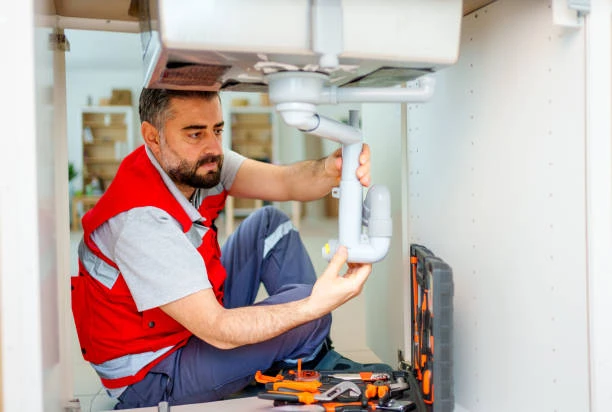The ASTM has recently updated its standards for polypropylene pressure pipe fittings, aiming to enhance safety, durability, and efficiency. These changes impact manufacturers, installers, and consumers, ensuring that polypropylene systems meet modern requirements for quality and sustainability. As polypropylene fittings gain popularity in plumbing and industrial applications, these updated standards reinforce their reliability.
What Are Polypropylene Pressure Pipe Fittings?
Polypropylene pressure pipe fittings connect sections of polypropylene pipe, forming a system capable of handling high-pressure water flow. Used widely in both residential and commercial applications, these fittings offer benefits like corrosion resistance, high durability, and the ability to handle hot and cold water.
Role of ASTM Standards in the Plumbing Industry
ASTM (American Society for Testing and Materials) standards provide guidelines for material quality, safety, and performance in various industries. In plumbing, these standards ensure that materials like polypropylene are tested and reliable. By updating these standards, ASTM keeps up with technological advancements and industry needs, ensuring that materials meet current performance expectations.
Details of the Latest ASTM Standard Update
The recent ASTM update introduces stricter guidelines for polypropylene pressure pipe fittings. The update covers new testing procedures, durability requirements, and sustainability considerations. By implementing these changes, ASTM aims to improve product quality and ensure polypropylene fittings are well-suited for modern plumbing systems.
Impact of the Standard Update on Polypropylene Pipe Systems
These new standards require manufacturers to meet more rigorous specifications, leading to higher-quality fittings in the market. For installers and end-users, this translates to a more reliable plumbing system, with fittings that last longer and perform better under high pressure. The update benefits all parties involved by enhancing product performance.
Why Polypropylene is Preferred in Pressure Pipe Systems
Polypropylene offers advantages that make it ideal for pressure pipe systems. It resists corrosion, handles temperature fluctuations, and is less prone to cracking under pressure. Compared to materials like PVC or copper, polypropylene offers a lightweight and cost-effective solution, making it a preferred choice for various applications.
How the ASTM Update Enhances Safety and Efficiency
The updated ASTM standards aim to improve the safety and efficiency of polypropylene fittings. The changes include stricter quality tests, ensuring that fittings meet or exceed industry expectations for durability. These standards offer peace of mind to consumers and help manufacturers maintain consistency in quality.
Sustainability and Polypropylene in Plumbing
Polypropylene is recyclable and has a lower environmental impact compared to other materials. The ASTM update emphasizes sustainable manufacturing practices, encouraging manufacturers to adopt eco-friendly processes. This focus aligns with the industry’s push toward more sustainable plumbing solutions, reducing waste and energy consumption.
Compliance Requirements for Manufacturers
Manufacturers must follow updated guidelines to ensure their products meet the new ASTM standards. This includes investing in high-quality materials, enhancing production processes, and conducting rigorous quality control. Compliance helps maintain product integrity, benefiting both the industry and consumers.
Testing and Quality Control Under the New ASTM Standards
The updated standards introduce more comprehensive testing methods to ensure product reliability. Manufacturers must conduct pressure tests, thermal endurance tests, and durability assessments. These tests help guarantee that polypropylene fittings can withstand the demands of modern plumbing applications.
Challenges and Considerations in Polypropylene Fittings Production
Polypropylene fittings production involves certain challenges, such as ensuring material consistency and managing costs. The ASTM update addresses these challenges by establishing higher standards for materials and production quality. This helps manufacturers produce fittings that meet industry expectations for durability and reliability.
Market Trends in Polypropylene Pressure Pipe Fittings
Demand for polypropylene fittings has grown due to their durability and cost-effectiveness. As more industries prioritize sustainable materials, polypropylene is set to become a staple in plumbing. Market trends indicate a shift toward eco-friendly and high-performance materials, positioning polypropylene fittings for long-term success.
Impact on Consumers and End-Users
For consumers, the updated standards mean better-quality polypropylene fittings that are more reliable and efficient. Plumbers benefit from using materials that meet strict guidelines, reducing the risk of leaks or failures. This improvement in product quality enhances overall satisfaction and trust in polypropylene systems.

Future of ASTM Standards and Polypropylene Fittings
ASTM standards will likely continue evolving to keep pace with industry advancements. Future updates may include more stringent sustainability guidelines and innovations in material testing. By staying aligned with industry trends, ASTM standards support the development of safer, more efficient products.
Conclusion
The ASTM’s updated standards for polypropylene pressure pipe fittings represent a significant step forward for the plumbing industry. By enhancing quality, safety, and sustainability, these changes benefit manufacturers, installers, and consumers alike. As polypropylene fittings become more widely used, adhering to updated standards ensures reliable, efficient plumbing systems for the future.
FAQs
- Why are ASTM standards important for polypropylene pressure pipe fittings?
ASTM standards ensure safety, quality, and durability in plumbing products. - How does the ASTM update improve safety?
The update includes stricter testing and higher quality requirements for polypropylene fittings. - What are the key changes in the new ASTM standard?
Changes include enhanced testing procedures, durability requirements, and sustainability guidelines. - Why choose polypropylene over other materials?
Polypropylene offers corrosion resistance, durability, and cost-effectiveness, making it ideal for plumbing. - How do manufacturers comply with the new ASTM standards?
Manufacturers follow updated guidelines, conduct quality testing, and ensure material consistency to comply.